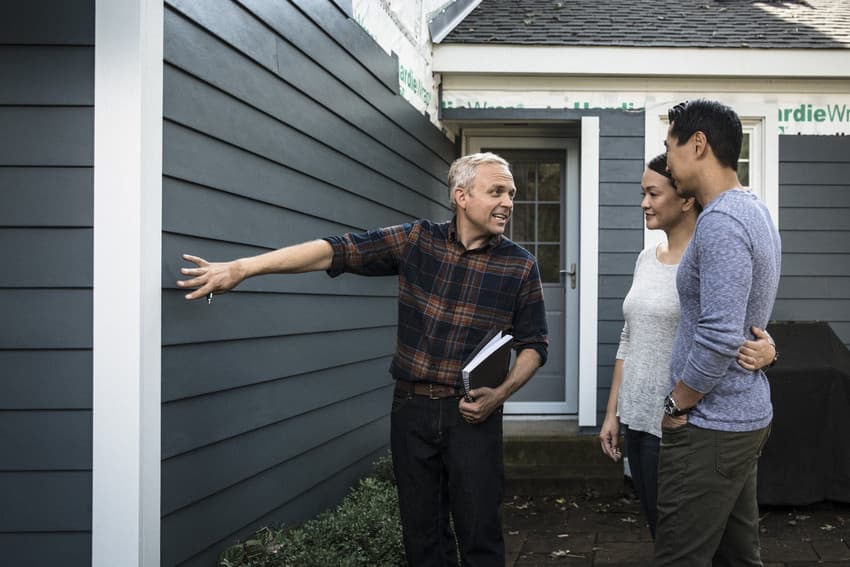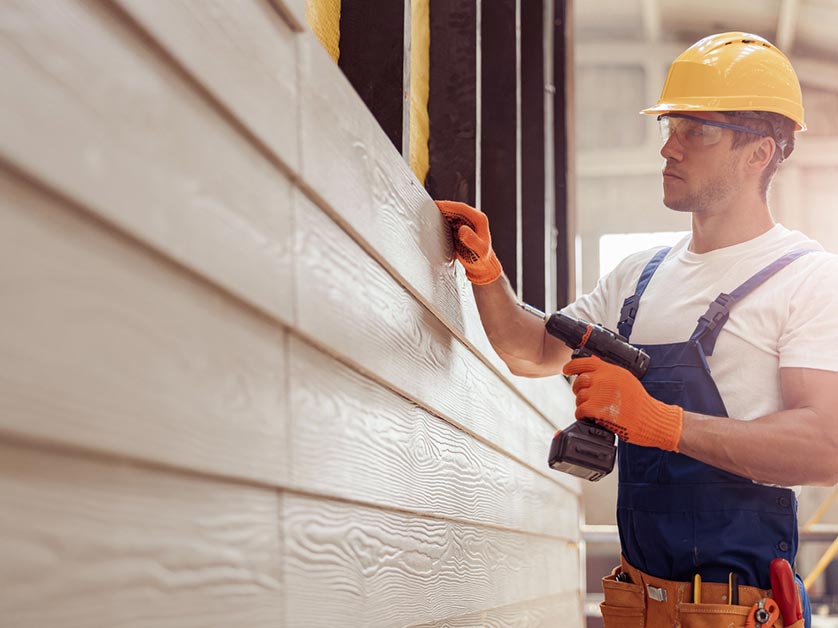The Important Overview to the Numerous Types of Exterior Siding and Their Distinct Advantages
In the world of home enhancement, choosing the right siding is a critical decision that impacts both visual appeal and practical efficiency. With so numerous alternatives to take into consideration, which home siding product truly stands out for your particular job?
Timber Exterior Siding
Wood house siding, a popular option for household outsides, offers a timeless aesthetic that combines all-natural elegance with architectural honesty. This siding product is available in numerous designs, consisting of clapboard, roof shingles, and board-and-batten, enabling property owners to customize their façade to match their design preferences. Wood exterior siding is usually crafted from long lasting varieties such as cedar, redwood, or ache, which are understood for their durability and capability to withstand ecological stressors.
Among the key benefits of timber house siding is its exceptional insulation buildings, which can add to power efficiency and lower home heating prices. Additionally, wood home siding is eco-friendly, making it an eco-friendly choice when sourced sustainably. Routine maintenance, including paint or staining, can extend its lifespan and boost its appearance, permitting homeowners to protect the natural charm of the wood.
Nonetheless, possible disadvantages consist of sensitivity to parasites, rot, and climate damage, requiring appropriate therapy and maintenance - morris siding contractor. Regardless of these concerns, when properly looked after, wood siding can offer a resilient and lovely remedy that boosts the personality of a home while supplying a cozy, welcoming environment

Vinyl Home Siding
Vinyl house siding has arised as a leading option for property owners seeking a low-maintenance exterior option that integrates resilience and price. This versatile material is crafted from polyvinyl chloride (PVC), making it resistant to different climate condition, consisting of wetness and UV rays. Because of this, plastic home siding does not warp, rot, or fade, guaranteeing long-lasting visual appeal.
Among the main benefits of plastic exterior siding is its extensive variety of shades and designs, enabling home owners to achieve the wanted seek their residential or commercial property without the requirement for frequent repainting. Furthermore, vinyl siding is easy to set up, which can dramatically decrease labor prices throughout building or improvement jobs.
Vinyl siding also adds to power efficiency. Several choices function insulation backing, which improves thermal efficiency, assisting to keep comfy indoor temperature levels and potentially reducing power expenses. Its smooth surface area assists in very easy cleansing, requiring only routine cleaning with a garden hose pipe to get rid of dust and debris.
Fiber Concrete Home Siding
Fiber concrete home siding has actually acquired traction amongst contractors and home owners alike because of its remarkable mix of toughness and aesthetic flexibility. Composed of a combination of cement, cellulose, and sand fibers, this house siding choice is engineered to endure extreme climate problems, including high winds, heavy rainfall, and temperature level variations, making it a long-lasting choice for residential outsides.

One of published here the main advantages of fiber cement siding is its resistance to pests, such as termites, and its non-combustible nature, offering improved fire safety and security. morris siding contractor. In addition, it is available in a large variety of colors, styles, and appearances, permitting property owners to attain their preferred visual without sacrificing efficiency
Another advantage is its reduced upkeep requirements; fiber cement exterior siding commonly needs painting or staining every 5-10 years, which is less constant than other materials. In addition, its long life adds to a lower general cost of possession, as it decreases the requirement for regular fixings or replacements.
Inevitably, fiber cement siding represents an excellent financial investment for those seeking a resistant, eye-catching, and flexible outside alternative, integrating both type and function to enhance the home's curb appeal.
Metal Siding
The appeal of steel house siding exists in its durable sturdiness and modern-day aesthetic appeal, making it a preferred option for contemporary style. Offered in materials such as aluminum and steel, steel exterior siding uses an array of surfaces and shades, permitting property owners to attain a tailored appearance that matches their layout vision.

Power performance is an additional significant benefit, as numerous metal home siding products are created with insulation choices that help manage indoor temperatures. This can lead to decreased energy costs in time. Furthermore, metal exterior siding is commonly recyclable, making it an ecologically friendly option for sustainability-minded homeowners.
The installment process for steel exterior siding can be reasonably simple, resulting in a quicker turnaround time for construction jobs. In general, steel home siding incorporates performance and design, making it a practical alternative for those seeking a visually enticing and enduring outside coating.
Block and Stone Exterior Siding
Brick and rock home siding stands apart as a timeless selection that enhances the aesthetic my explanation beauty of any home. Recognized for their sturdiness and low maintenance, these products offer a remarkable roi while elevating the residential property's aesthetic allure. Offered in various colors, appearances, and patterns, brick and stone can be tailored to fit varied architectural styles, from typical to contemporary.
Among the main benefits of brick and stone house siding is their energy performance. Both materials have natural insulating buildings that assist regulate interior temperature levels, possibly lowering heating and cooling costs. Furthermore, they provide premium fire resistance contrasted to various other house siding choices, contributing to improved safety.
One more advantage is their long life. Block and rock can last for decades, usually requiring minimal upkeep past periodic cleansing. Unlike wood siding, they are unsusceptible bugs and rot, guaranteeing a lasting outside that stands up to the components.
Conclusion
In summary, the selection of home siding dramatically my link affects a home's aesthetic charm, power efficiency, and upkeep requirements. Each type of exterior siding-- whether timber, plastic, fiber steel, block, or cement and stone-- provides distinct advantages tailored to numerous home owner choices and ecological conditions. Understanding these choices makes it possible for notified decisions that improve both the sturdiness and aesthetic charm of household outsides. Inevitably, selecting the appropriate siding is important for attaining a balance in between performance and layout in domestic architecture.
One of the main advantages of wood house siding is its outstanding insulation buildings, which can add to power effectiveness and lower home heating costs. In addition, timber siding is eco-friendly, making it an eco friendly option when sourced sustainably.One of the main advantages of metal exterior siding is its resistance to various ecological variables.Power efficiency is one more considerable benefit, as lots of metal siding products are developed with insulation options that assist regulate indoor temperatures. Each kind of siding-- whether wood, vinyl, fiber steel, concrete, or block and stone-- offers distinct advantages tailored to various property owner preferences and ecological conditions.